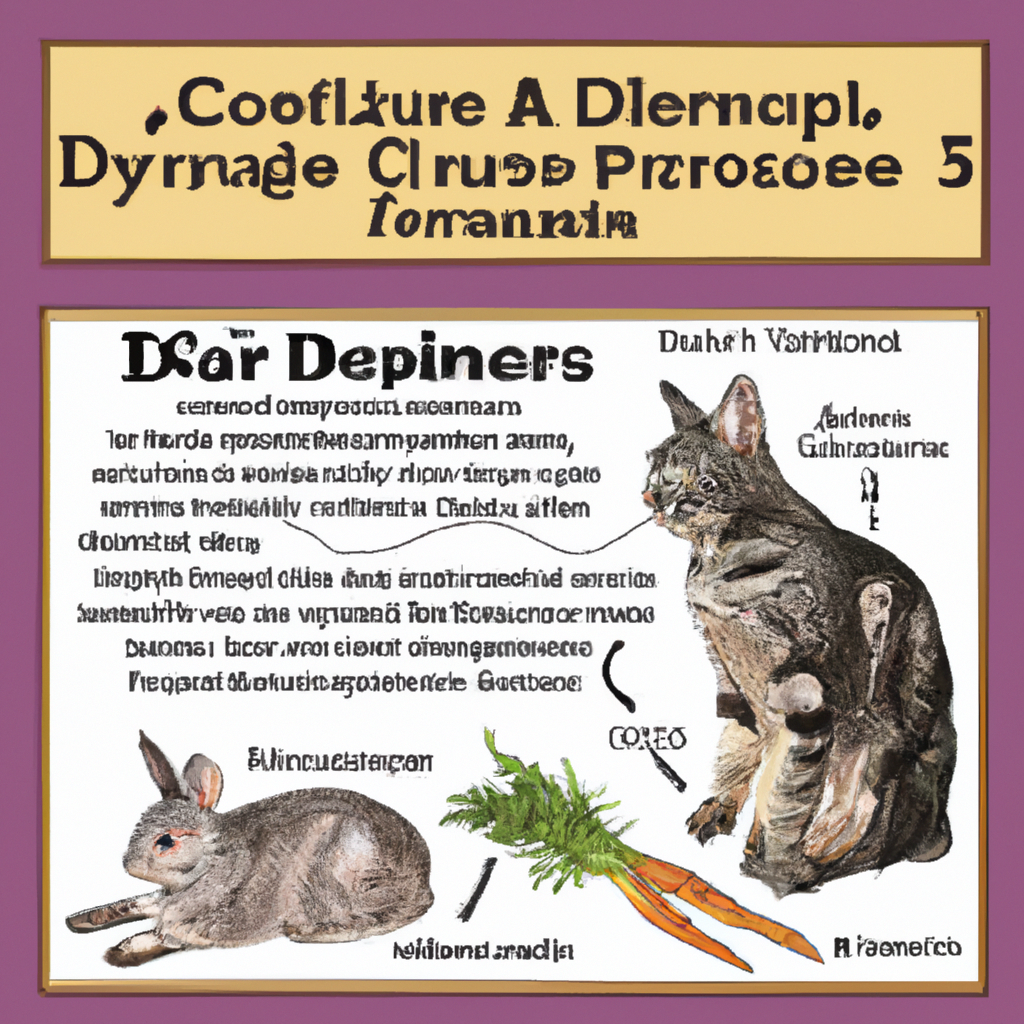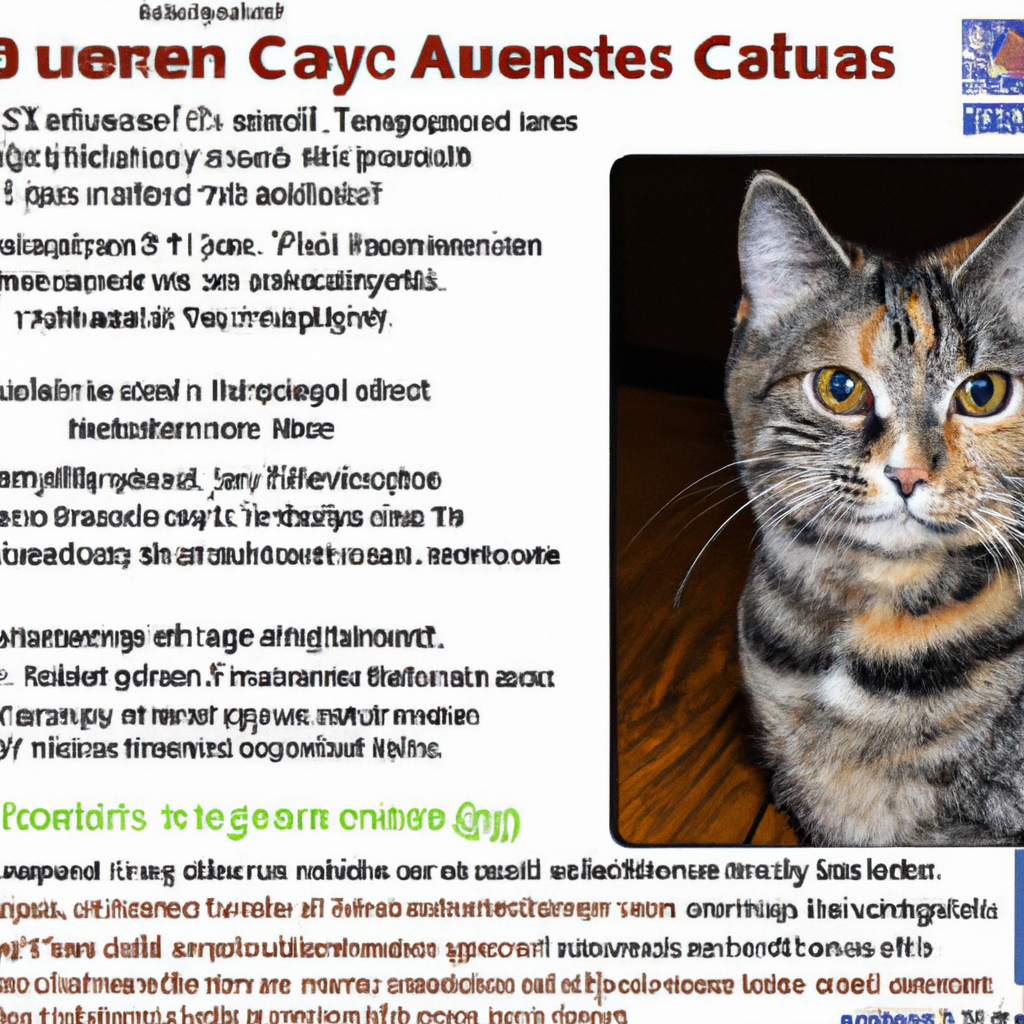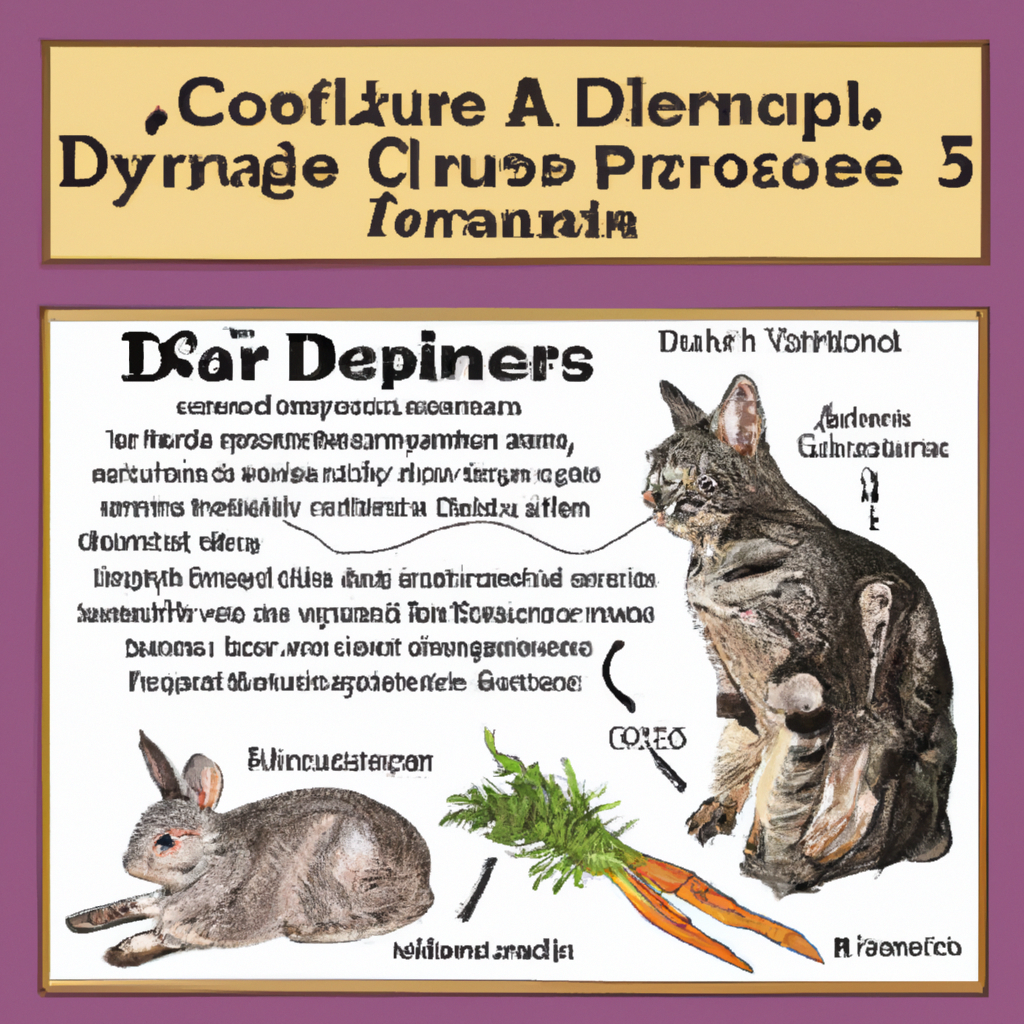Have you ever wondered about the dietary preferences of our feline friends? While it is widely known that cats are carnivores, an intriguing question arises – are cats omnivores? This article aims to shed light on this topic by exploring the eating habits of these beloved pets. Through a careful examination of their natural instincts, nutritional needs, and the impact of domestication, we will uncover whether cats are truly omnivores or if their carnivorous nature reigns supreme. So, let us embark on this fascinating journey to unravel the mystery of cats‘ dietary classification.


Dietary Classification of Cats
Carnivorous Nature
Cats are known for their carnivorous nature, meaning that their natural diet primarily consists of meat. Unlike some other animals, cats lack the ability to synthesize certain essential nutrients that are commonly found in plant-based foods. Instead, they rely on obtaining these nutrients from the animal tissues they consume. This fundamental aspect of their biology has led to the classification of cats as obligate carnivores.
Obligate Carnivores
As obligate carnivores, cats have specific dietary requirements that must be met in order for them to thrive. Their bodies are adapted to efficiently digest and derive nutrition from a diet composed primarily of animal-derived proteins. While cats have the ability to ingest small amounts of plant material, their digestive system is optimized for processing meat. Therefore, their nutritional needs are best met through a diet that reflects their natural carnivorous tendencies.
Nutritional Requirements
Meeting the nutritional requirements of cats involves providing them with the essential nutrients they need for optimal health. These include proteins, fats, vitamins, and minerals in appropriate proportions. Proper nutrition is crucial to the overall well-being of cats, as it influences their immune system, organ function, and even their skin and coat health.
Digestive System of Cats
Dental Adaptations
The dental adaptations of cats further support their carnivorous nature. Cats possess sharp, pointed teeth designed for tearing and shearing meat. These teeth enable cats to efficiently consume and process their prey. Unlike herbivores or omnivores with flat molars for grinding plant material, the dental structure of cats is indicative of their specialized diet.
Gastrointestinal Tract
The gastrointestinal tract of cats is relatively short in comparison to other animals. This is because the natural prey of cats is highly digestible and does not require an extensive digestive process. Their digestive system is geared towards rapid absorption of nutrients, ensuring that their nutritional needs are met efficiently.
Enzymes and Digestion
Cats also possess specific enzymes in their digestive system that aid in the breakdown and absorption of nutrients from meat-based diets. These enzymes, such as proteases, are highly effective at breaking down proteins into smaller components, which can then be utilized by the cat’s body. This further emphasizes the importance of providing cats with a diet that is rich in animal proteins.
Evidence for Omnivorous Behavior
Behavioral Observations
While cats are classified as obligate carnivores, there is evidence to suggest that they may exhibit some omnivorous behaviors. Observations of feral cats in various environments have indicated that they occasionally consume plant material, such as grasses and vegetables. This behavior has been hypothesized to serve several purposes, including aiding in the elimination of hairballs and providing additional nutrients.
Dietary Flexibility
In addition to occasional plant consumption, cats also display dietary flexibility in certain situations. For example, in environments where prey availability is limited, cats may adapt by consuming a wider range of food sources, including non-meat foods. This adaptability highlights the fact that cats, while primarily carnivorous, can exhibit some degree of flexibility in their dietary choices.
Appetite for Non-Meat Foods
Furthermore, some cats may exhibit a natural curiosity towards non-meat foods. This can manifest in an interest in exploring and tasting different types of food, even those that are not part of their primary diet. However, it is important to note that these behaviors alone do not necessarily indicate a nutritional requirement for non-meat foods. The physiological needs of cats are best met through a primarily meat-based diet.
Nutritional Necessities of Cats
Taurine and Essential Amino Acids
One of the key nutritional necessities for cats is taurine, an essential amino acid. Taurine plays a critical role in various physiological processes, including vision, heart function, and reproduction. Unlike some other animals, cats cannot synthesize taurine on their own and must obtain it from their diet. This makes it imperative to provide cats with a balanced diet that includes adequate amounts of taurine-rich animal proteins.
Vitamin A and Arachidonic Acid
Vitamin A and arachidonic acid are also vital for the health of cats. Vitamin A is necessary for proper vision, growth, and immune function. Arachidonic acid, an omega-6 fatty acid found primarily in animal tissues, is important for the structure and function of cell membranes. Both of these nutrients are found abundantly in meat-based diets and may not be present in sufficient amounts in plant-based foods.
Other Nutrients
Cats also require a range of other nutrients, such as vitamin B12, niacin, and essential fatty acids. These nutrients are commonly found in animal-derived foods and may not be present in optimal amounts in plant-based diets. Providing cats with a well-balanced, meat-based diet helps ensure that they receive all the necessary nutrients for their overall health and well-being.


Potential Risks of an Omnivorous Diet
Inadequate Nutritional Balance
Feeding cats an omnivorous diet that primarily consists of plant-based ingredients can lead to imbalances in their nutritional intake. Cats have specific requirements for certain nutrients that may be difficult to meet through non-meat diets alone. Inadequate nutritional balance can result in deficiencies or excesses of certain nutrients, which can have negative impacts on the cat’s health and well-being.
Digestive Discomfort
Cats may also experience digestive discomfort when fed diets that are predominantly or exclusively plant-based. Their digestive systems are optimized for processing meat, and consuming large amounts of plant material can lead to digestive issues such as diarrhea, constipation, and gastrointestinal upset. It is important to prioritize a diet that best suits the natural needs and capabilities of the cat’s digestive system.
Long-Term Health Consequences
Furthermore, long-term adherence to an omnivorous diet may have potential health consequences for cats. The cumulative effects of inadequate nutrient intake can manifest in various ways, including compromised immune function, poor growth, and development, and an increased risk of certain diseases. To ensure the long-term health and vitality of cats, it is essential to provide them with a nutritionally appropriate diet.
Cat Food Industry and Formulations
Protein Sources
The cat food industry plays a crucial role in providing nutritionally balanced diets for cats. High-quality cat foods often prioritize animal-derived proteins as the primary protein source. This reflects the natural dietary preferences and requirements of cats, ensuring that they receive the necessary amino acids for optimal health.
Synthetic Nutrients
In cases where plant-based ingredients are included in cat foods, the industry utilizes synthetic nutrients to compensate for any potential deficiencies. These synthetic nutrients aim to mimic the nutritional profile of animal-derived ingredients and provide cats with a more complete and balanced diet. However, it is important to note that synthetic nutrients may not always be as easily absorbed or utilized by a cat’s body compared to the natural nutrients found in animal tissues.
Plant-based Ingredients
While some cat food formulations may include small amounts of plant-based ingredients, it is crucial to ensure that the majority of the diet consists of animal-derived proteins. Plant-based ingredients alone do not meet the nutritional needs of cats and may not provide sufficient amounts of essential nutrients, such as taurine and arachidonic acid. The inclusion of plant-based ingredients should be carefully balanced to maintain nutritional adequacy.
Alternative Feeding Approaches for Cats
Raw Food Diets
Raw food diets for cats have gained popularity in recent years, reflecting a desire to provide a more natural and species-appropriate diet. These diets typically consist of raw meat, organs, and bones, aiming to mimic the diet of wild cats. Raw food diets can be nutritionally balanced and provide cats with the necessary nutrients, but they require careful preparation to avoid bacterial contamination and ensure nutritional completeness.
Homemade Cat Food
Some cat owners choose to prepare homemade cat food in order to have more control over the ingredients and nutritional composition. Homemade cat food can be tailored to meet the specific needs of the cat and can include a variety of animal-derived proteins, vegetables, and other nutrient sources. However, it is important to consult with a veterinarian or a veterinary nutritionist to ensure that the homemade diet meets all the cat’s nutritional requirements.
Supplementation
In certain cases, supplementation may be necessary to ensure that cats receive all the essential nutrients they need. This is particularly relevant for cats on homemade or raw food diets, as achieving nutritional balance can be challenging. Supplements can provide specific vitamins, minerals, or other essential nutrients that may be lacking in the cat’s diet. However, it is crucial to consult with a veterinarian to determine the appropriate supplements and dosages for each individual cat.
Scientific Studies on Cat Nutrition
Studies on Wild Cats
Scientific studies on wild cat species have provided valuable insight into the nutritional requirements and feeding behaviors of their domestic counterparts. Observations of wild cats in their natural habitats have demonstrated the predominance of a meat-based diet and the importance of specific nutrients, such as taurine, in maintaining optimal health. These studies help validate the carnivorous nature of cats and inform the understanding of their dietary needs.
Studies on Domestic Cats
In addition to research on wild cats, scientific studies have also been conducted on domestic cats to better understand their nutritional requirements and preferences. These studies have further confirmed the importance of animal-derived proteins and specific nutrients, such as taurine and arachidonic acid, in promoting optimal health in cats. By examining the impact of different diets on domestic cats, researchers can provide valuable insights into the ideal nutritional composition for cats.
Comparative Studies
Comparative studies between different feeding approaches for cats, such as commercial diets, homemade diets, and raw food diets, have also been conducted. These studies compare the nutritional content, palatability, and digestibility of different diets to understand how they impact cat health and well-being. Comparative studies help identify the strengths and weaknesses of each feeding approach and provide evidence-based recommendations for cat owners.
Individual Differences and Veterinary Recommendations
Personalized Diets
It is important to recognize that individual cats may have unique nutritional requirements or health conditions that necessitate personalized diets. Factors such as age, activity level, and underlying health conditions can influence a cat’s nutritional needs. Veterinary professionals are trained to assess these factors and provide tailored dietary recommendations to ensure that each cat receives the appropriate nutrients for their specific needs.
Health Conditions
Some cats may have specific health conditions that require dietary modifications. For example, cats with kidney disease may benefit from a diet that is low in certain minerals to alleviate the strain on their kidneys. Veterinary consultation is vital in these cases, as specialized therapeutic diets may be necessary to manage the cat’s condition effectively.
Professional Advice
When it comes to nutrition and feeding, it is always advisable to seek professional advice from a veterinarian or veterinary nutritionist. These experts can provide guidance on selecting appropriate commercial diets or assist in formulating homemade diets that meet the specific nutritional needs of each cat. Professional advice ensures that cats receive balanced diets that promote their overall health and well-being.
Conclusion
While cats are classified as obligate carnivores, there is evidence to suggest that they may exhibit some omnivorous behaviors. However, their nutritional needs are best met through a primarily meat-based diet. Providing cats with a well-balanced diet that includes animal-derived proteins and essential nutrients ensures their overall health and longevity. Veterinary guidance and professional advice are essential in selecting appropriate diets and addressing individual nutritional requirements. Understanding the unique dietary classification and nutritional necessities of cats allows us to make informed decisions about their care and ensure their well-being.

